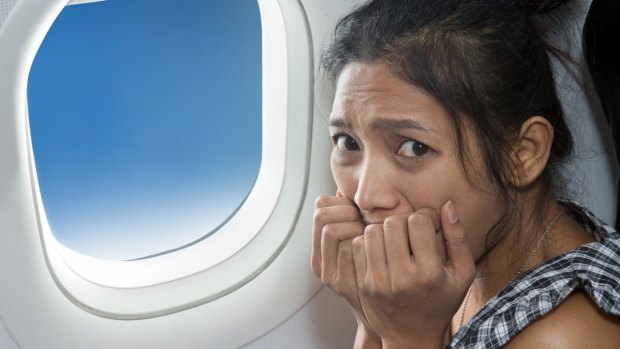This was published 7 years ago
Air travel safety: How safe air travel is compared with other forms of transport
By Michael Gebicki

Is flying really the safest form of transport?Credit: iStock
Although they attract enormous attention, commercial aircraft crashes are a lot like shark attacks. Measured against the number of air travellers, the number of deaths from air crashes is minuscule.
The index the airline industry prefers to use is fatalities per kilometre, since by that measure commercial air travel outshines every other form of transport. For the traveller, however, a far more useful yardstick is the number of deaths relative to the number who travel aboard a particular form of transport. What you want to know is "what are my chances of surviving this particular flight, bus trip or train journey?"
According to the latest figures from the Aviation Safety Network, a total of 258 people died in crashes aboard commercial aircraft capable of carrying 14 or more passengers in 2016. That's one fatality for every 13.3 million passengers who flew that year. To put it another way, you would have to take about one flight a day for 84 years before you stood a 50-50 chance of dying in an air crash on a commercial aircraft. However, odds are it would take much longer than that since that figure is computed on the current state of air safety. Air safety is steadily improving year by year, with a long-term trend that reflects fewer deaths relative to the total number of air travellers. By that measure, 2016 was the safest year on record.
See also: World's safest airlines named
So far in 2017 eight fatalities have been recorded in aviation crashes. Four of those were in light aircraft, two tragically in a plane that crashed into Perth's Swan River in front of thousands of spectators. Four deaths were caused when a Boeing 747 cargo plane operated by THY Turkish Airlines overshot the runway in at Bishkek-Manas International Airport in Kyrgyzstan, crashed and caught fire. All on board died, but so did 35 people on the ground when the aircraft ploughed into a holiday village at the end of the runway.
The figures relating to the number of deaths worldwide from bus and train travel are far less meaningful since those figures reflect local road and rail conditions and driving behaviour. A bus ride in Nepal or Peru carries far greater inherent risks than one in Norway or New Zealand.
In South Africa, which has a spectacular crash rate, more than 800 road deaths were recorded in less than three weeks in December 2016. In Australia the same figure for that entire year was 1300.
India has some horrendous railway crashes, most recently in November 2016 when the Indore-Patna Express derailed, causing 120 deaths. In Mumbai alone, 3304 people died in 2015 commuting on local trains, most caused by passengers falling from overcrowded trains. In many cases this occurred when riding on the roof of the train, which is not likely to be a risk factor for many foreign travellers.
For the past few years the annual death rate on Indian railways has hovered close to 30,000. About half of those are the result of falling from trains. If you subtract those fall casualties from the total, even that death rate pales against the 8 billion passengers who travel each year on the Indian rail network. Over the past few years the casualty rate for India's rail system has been hovering around one death for every half million passengers. The figure for deaths on long-distance trains is lower, although still ahead of the figure for air travel.
Applying the same reasoning to air travel, the airlines of some countries come out much better than others. In absolute numbers, the US has the most commercial airline crashes and deaths, but then Americans fly more than any other country. Australia sits in 19th place on the list of countries with the most fatal airline accidents since 1945. Among UK airlines, the last fatal crash occurred in 1989 when 47 people died when a British Midland Boeing 737 crashed beside the M1 Motorway. No other major nation has a similarly flawless safety record, with millions of flights on almost 10,000 fatality-free days. Based on fatalities and crashes adjusted for air traffic volumes, Russia is the most dangerous country in which to fly.
Just 43 passengers died aboard cruise ships in 2016. The overwhelming majority were older passengers who died from natural causes. Only five died as a result of accidents. There were about 24 million cruise ship passengers in 2016. That makes slightly more than one accidental death per 5 million cruise passengers, which suggests cruising is more than twice as risky as air travel.
See also: The 10 things that make flying better than it used to be
See also: Six incredible planes you'll never get to fly on
Listen: Flight of Fancy - the Traveller.com.au podcast with Ben Groundwater
The best places to visit in 2017
To subscribe to the Traveller.com.au podcast Flight of Fancy on iTunes, click here.
Sign up for the Traveller newsletter
The latest travel news, tips and inspiration delivered to your inbox. Sign up now.